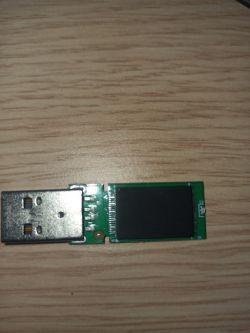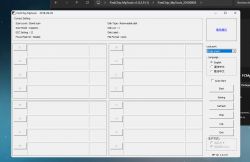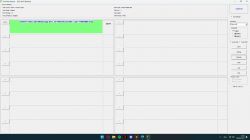FAQ
TL;DR: One case regained operation with a 10 GB capacity drop; "my key is working again." Use the shared MP tool approach to reinitialize. [Elektroda, khdh05283, post #21108484]
Why it matters: This FAQ helps Windows users fix USB2DISK sticks that show 0.0G and generic IDs without diving blind into random tools.
Quick Facts
- Symptom signature: VID=FFFF, PID=1201, capacity 0.0G, misaligned, on Windows 8 Pro. [Elektroda, khdh05283, post #21106128]
- Confirmed utility referenced: FirstChip_MpTools_20220601; helpers requested the 'Refresh' screen. [Elektroda, pidar, post #21109347]
- Outcome reported: drive worked again, with ~10 GB lost from a nominal 128 GB. [Elektroda, khdh05283, post #21108484]
- Controller ID is critical; "lightly grease the chip with thermal paste - this will improve the contrast." [Elektroda, kaleron, post #21108504]
- If undetected, try vendor MP tools (Alcor, Chipsbank, FirstChip) until one matches. [Elektroda, doggyfreestart1, post #21106320]
How do I fix a USB2DISK that shows VID FFFF:1201 and 0.0G in ChipGenius?
Use the MP tool shared in the thread to reinitialize the controller. In this case, running the recommended tool restored functionality. The drive returned usable, though capacity decreased by about 10 GB on a 128 GB unit. After repair, verify the drive and then format as needed. [Elektroda, khdh05283, post #21108484]
Which MP tool worked in this thread?
FirstChip_MpTools_20220601 was used, with helpers asking to show the screen after pressing Refresh. That confirms detection and readiness to proceed with initialization. Use that build if your controller matches, and follow on-screen steps carefully. [Elektroda, pidar, post #21109347]
ChipGenius shows "Network error, request for chipmodel failed"—what should I do?
Assume the device is too new or generic for the database. Open the drive to read the controller, or test MP tools from common vendors. Try Alcor, Chipsbank, and FirstChip utilities until one detects the device. This approach enabled progress in the thread. [Elektroda, doggyfreestart1, post #21106320]
FirstChip MPTool detects the drive—what do I do next?
Follow this practical flow:
- Connect the USB, open FirstChip_MpTools_20220601, and click Refresh.
- Confirm the device appears, then start the initialization/repair routine.
- After completion, re-plug, verify capacity, and format if needed.
The helper explicitly asked for the post-Refresh screen to confirm detection. [Elektroda, pidar, post #21109347]
FirstChip and other tools don't detect my key—any workaround?
Try different vendor MP tools and builds. If detection still fails, open the case and read the controller marking to pick the correct utility. Matching the tool to the controller family is the fastest route to detection and repair. [Elektroda, doggyfreestart1, post #21106320]
Do I need the controller marking? How can I read it when it's tiny?
Yes, the marking is most important for selecting the right tool. Improve legibility with light and magnification. Expert tip: "lightly grease the chip with thermal paste - this will improve the contrast." Photograph the chip once legible and note the full code. [Elektroda, kaleron, post #21108504]
Is this thread about data recovery or just repair?
Repair only. The participants focused on restoring the stick to working order, not on extracting data. If you need data recovery, stop writing to the drive and pursue a separate recovery workflow. [Elektroda, melanchel, post #21106952]
Why did the capacity drop by about 10 GB after the fix?
In this case, the user reported the drive working again with roughly 10 GB less capacity on a 128 GB unit. Capacity change can occur after controller re-initialization. Accept the stable capacity the tool sets, then test and format. [Elektroda, khdh05283, post #21108484]
What exactly did ChipGenius report in this case?
Key outputs were: VID=FFFF, PID=1201, capacity 0.0G, protocol USB 2.0, max power 100 mA, and misaligned partition state. The OS was Windows 8 Professional. These indicators flagged a corrupted or generic-identified device. [Elektroda, khdh05283, post #21106128]
Where can I download the tool referenced by helpers?
From the helper’s attachment linked in the thread. Follow the post with the shared package and test detection with that build first. Users confirmed it was the first that found the key in this case. [Elektroda, pidar, post #21108333]
Should I post screenshots or logs for better help?
Yes. Share the FirstChip_MpTools_20220601 window after clicking Refresh. Helpers specifically asked for that view to confirm recognition and configuration before proceeding. Clear screenshots accelerate accurate guidance. [Elektroda, pidar, post #21109347]
Can I fix it without opening the drive?
You can try common MP tools first. If none detect the device, open it and read the controller marking so you can match the correct utility. This step is often decisive. [Elektroda, doggyfreestart1, post #21106320]
What if no MP tool detects the drive at all?
In this thread, initial attempts failed: "FirstChip and other software don't detect my key." A later build finally detected it. Keep testing relevant vendor utilities and versions until you get recognition. [Elektroda, khdh05283, post #21107185]
Does the Windows version matter here?
The report came from a system running Windows 8 Professional. The key symptoms and tool-based approach were observed in that environment. Adjust only if your OS blocks unsigned utilities. [Elektroda, khdh05283, post #21106128]






